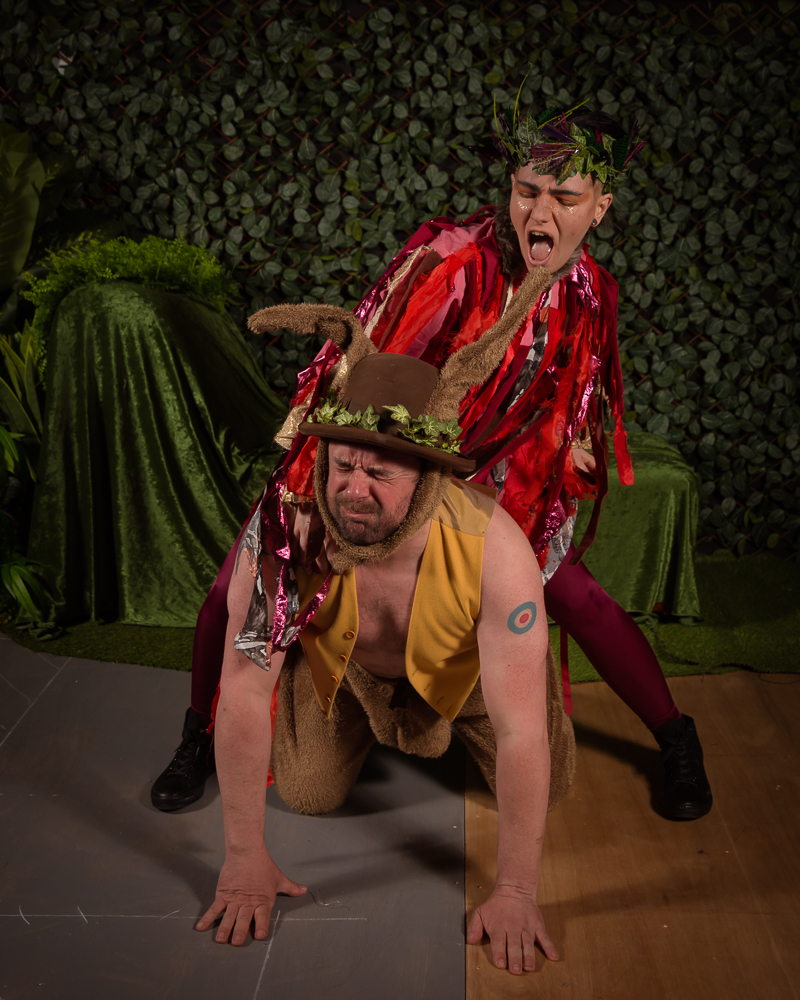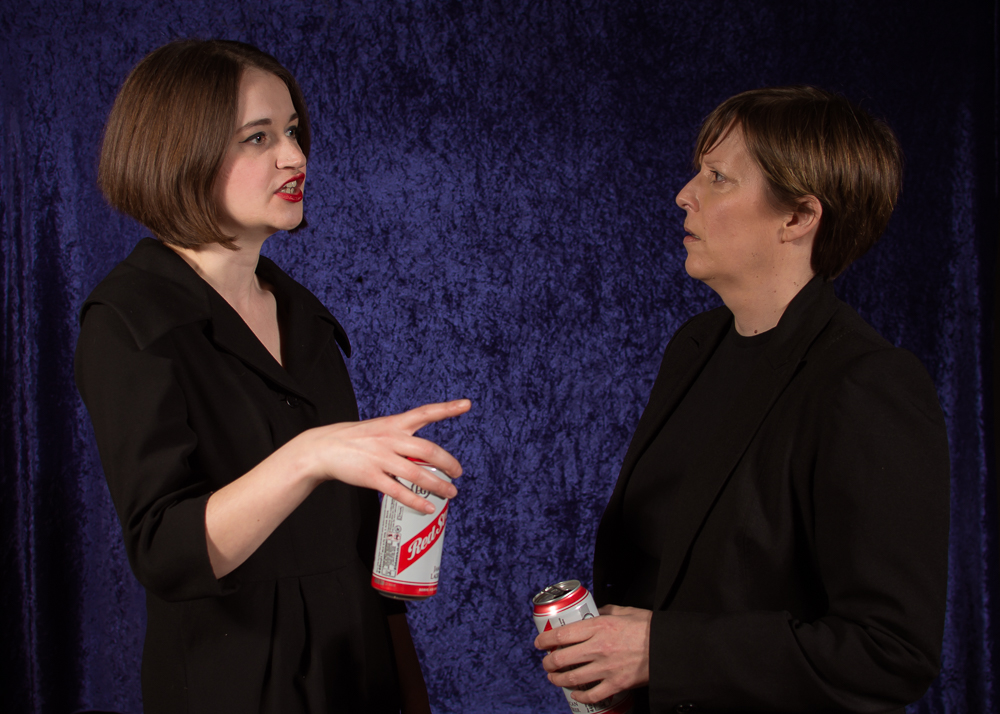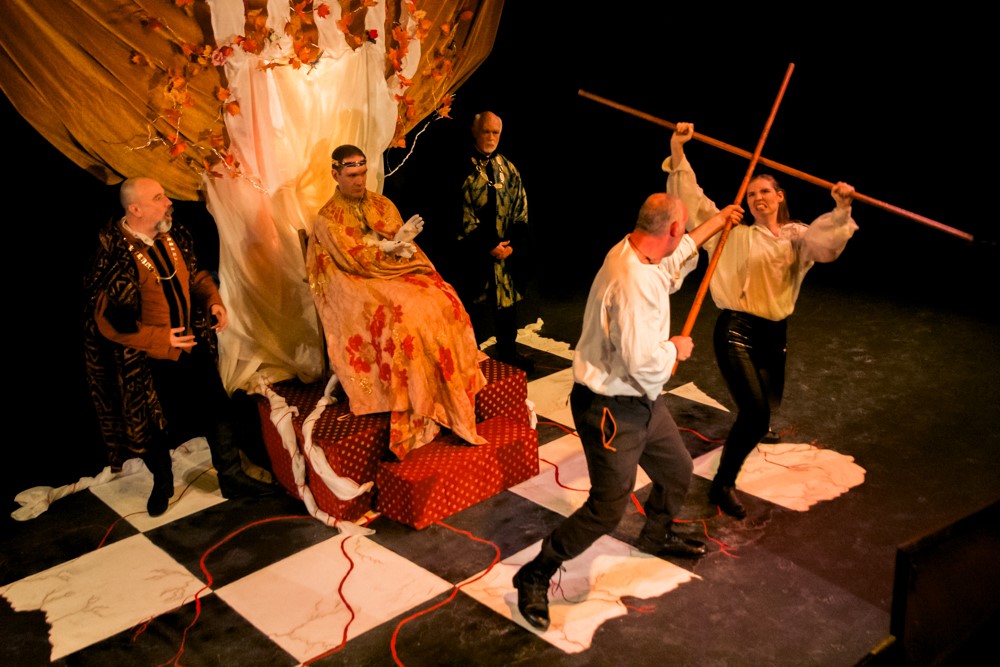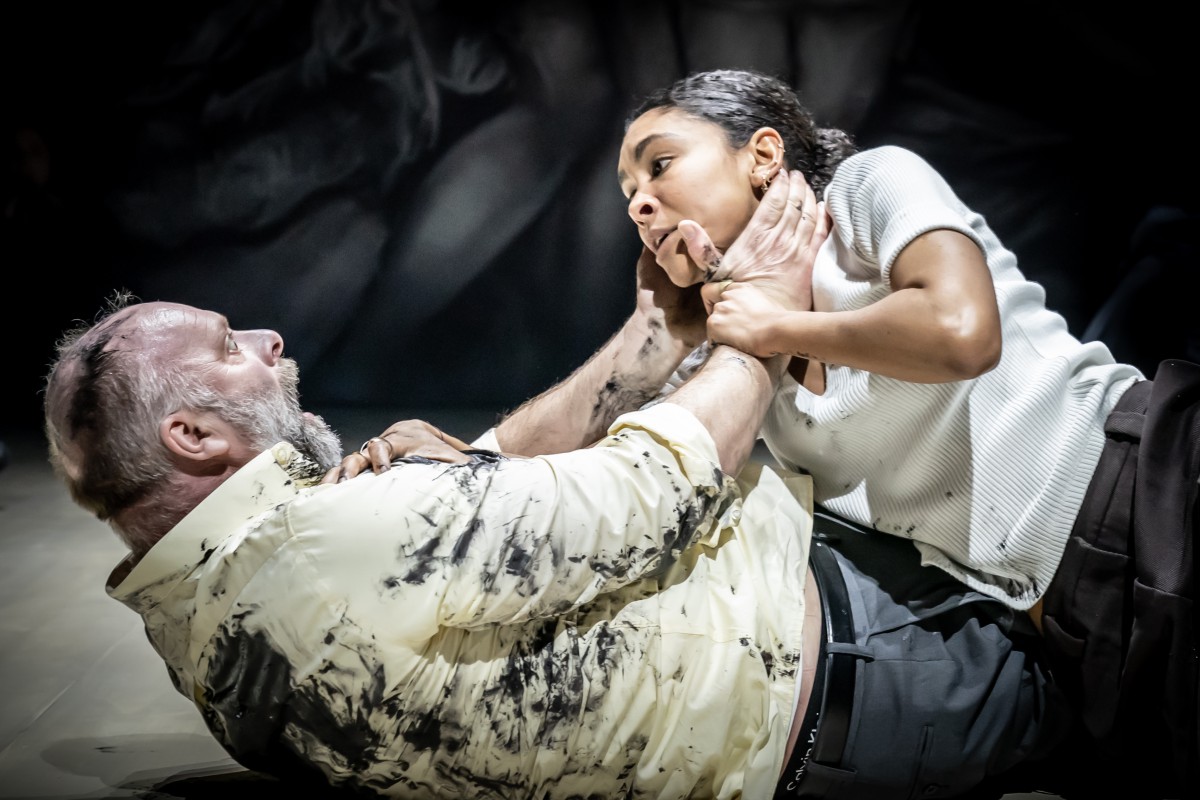There is always a temptation with Shakespeare to try to do something different: this version of A Midsummer Night’s Dream nominally sets the action around the Suffragette movement of the early 20th century.
Except for a couple of Votes for Women sashes, though, this setting makes little impact on proceedings and instead we get a fairly straightforward production, that particularly delights in the ‘rude mechanicals’ and their play-within-a-play.
With Rob Tiffen’s Bottom, this is no surprise. His is a commanding performance both before and after transformation, and Barney Matley as Quince is a brilliant foil. The two share a dance sequence towards the end that seems entirely superfluous, but is just good fun.
Robin Croft as Puck is also clearly enjoying themselves, dashing impishly around the theatre and causing havoc for the four confused lovers supposedly at the centre of the action.
Compared to the energy of the ‘players’ they sometimes seem a little flat, but Eva Wright as Helena and Naomi Cunnigham as Hermia come increasingly animated as the faery dust plays havoc on their love lives, pelting across the stage in fury. “Though she be little she is fierce” indeed.
Much of the cast double-up on roles, appearing both within the mortal and the faery realm, with notable contributions from Megan Saunders as Cobweb, and Melanie Peter as Snug.
The Sewell Barn is physically compressed, but the set neatly transforms from palace to wood and back again. In contrast, the lighting – other than a few blunt effects – lacks atmosphere, with a bright wash feeling less than dreamy.
The heart though, is the poetry and the performances, and there is an abundance of humour here with plenty of physicality and big belly laughs, making for a very entertaining evening.
- A Midsummer Night’s Dream continues at Sewell Barn Theatre until June 10, 2023.



